2013 was a banner year in film to say the least, with a delightfully balanced representation of big box office hits, indie sleepers, documentaries and international imports. So, for Moving Pictures’ inaugural piece, let’s take a look back at the best films of a year that made it an ideal time to start a film blog.
10. Prisoners (Dir. Denis Villeneuve)
Prisoners is an exciting film because it subverts the elements of an average crime thriller, blurring the lines between good and evil, right and wrong. It is a film about obsession and grief just as much as it’s about the particulars of the kidnapping that sets the story in motion. Prisoners is also a flawed film, bogged down in the end by an overwrought third act, but this common genre pitfall is excusable in light of its devastatingly intense performances and masterful cinematography. Beyond the merits of the film itself, this English language debut from French director Denis Villeneuve (Incendies) marks the announcement of yet another promising filmmaker to watch closely*.
Two families are thrown into crisis when their young daughters vanish on a dismal Thanksgiving afternoon, leaving the panicked fathers (Hugh Jackman and Terrence Howard) to take matters into their own hands when law enforcement seemingly falls short. As a sullen, twitchy detective (Jake Gyllenhaal) continues to work the case, questions of truth, justice and the efficacy of the social compact convolute the characters’ motives. Jackman, and especially Gyllenhaal, are outstanding, and Paul Dano (as a developmentally disabled suspect) demonstrates yet again why he is one of the most interesting character actors working today. But the key element here is the pitch-perfect cinematography by eleven-time Coen Brothers collaborator Roger Deakins (No Country for Old Men, O Brother Where Art Thou?, Barton Fink). His stark vision acts as a character unto itself, not only adding to the film’s brooding tone but also coloring its themes with his significant compositions.
Third act narrative missteps notwithstanding, Prisoners is an extremely worthwhile film, and in the end it sticks with you more because of its questions than its answers.
*Look for Moving Pictures’ review of Villeneuve’s next film Enemy, also starring Jake Gyllenhaal, later this Spring.
9. Only God Forgives (Dir. Nicolas Winding Refn)
The latest from Danish director Nicolas Winding Refn is an unapologetically style-over-substance affair. Refn’s previous outing, Drive (one of the best films of 2011 in this writer’s opinion, and also starring Ryan Gosling), provides more in the way of narrative and character development, but the pulpy yet absorbing plot of Only God Forgives acts merely as a canvas upon which to display the director’s imposing formal prowess. The film’s striking visual style could certainly be described as Kubrickian (cinematographer Larry Smith actually worked on the lighting crew of Kubrick’s final film, Eyes Wide Shut): painstakingly precise framing; patient, fluid camera work; an eerily unnatural sense of symmetry, all drenched in the neon light of its Bangkok setting. Some have taken issue with the film’s lack of an emotional core (also a common critique of Kubrick’s work) but that criticism is ultimately beside the point. Despite the fact that it is essentially a classic revenge story, Only God Forgives foregoes any sentimental appeals, convoluted plot machinations or extended action sequences and instead functions as a tightly crafted mood piece. The mood? Dread.
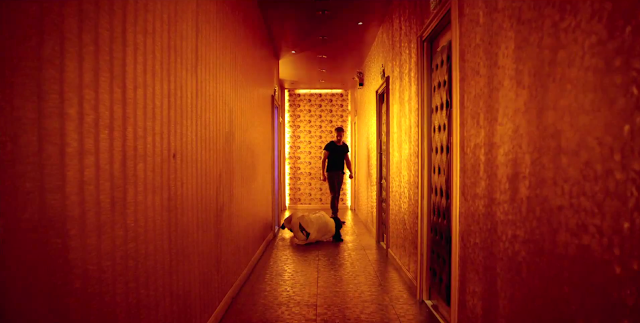
Gosling’s actual speaking lines are few and far between, he says much more with facial expressions and body language, but there is plenty else to take in. One character’s recurring visits to a cop karaoke bar are simultaneously humorous and ominous. Another unsettling scene proves once and for all that the method of torturing someone doesn’t have to be that creative to be truly disturbing if you have believable performances and capitalize on tension. It also doesn’t hurt that many of the proceedings are set against the backdrop of a dark, throbbing electronic score from Cliff Martinez (who also provided the music for Drive).
This film was only one of two highly anticipated 2013 releases starring Ryan Gosling (if you don’t count Gangster Squad), the other being Derek Cianfrance’s Blue Valentine follow up, A Place Beyond the Pines. The latter adopts an epic scope, striving to create a multigenerational saga about fathers and sons, crime and punishment, but its bold aspirations ultimately fall short. Only God Forgives, on the other hand, is a gleefully savage exercise in tone; a 90 minute nightmare trance that leaves the viewer feeling more release than resolution by the time the credits (which, by the way, are presented in English and Thai) roll.
8. Upstream Color (Dir. Shane Carruth)
Shane Carruth’s mind bending debut Primer took the Grand Jury Prize at Sundance in 2004, which makes it rather odd that the DIY filmmaker hasn’t made anything else until now. Or is it? The DIY designation is well earned, as Carruth acts as writer, director, lead actor, editor, cinematographer, composer and producer of his magnificent sophomore effort Upstream Color. This is clearly an artist who knows exactly what he wants and is willing to use as much time and energy as needed to realize his vision…and what a vision it is.
The story centers on the inexplicable connection between two damaged souls (Carruth, and the fantastic Amy Seimetz) and their subsequent quest to understand the enigma of their shared history. Sounds a bit vague? It might, but the narrative is actually rooted firmly in hard science fiction with plot points involving parasitic mind control, fringe horticulture and a mysterious pig farmer. It’s all quite interesting (the first half hour is especially successful in creating a sense of surreal menace), but what makes Upstream Color so unique is the stunning, expressionistic, Terrance Malick-esque cinematography. Most science fiction is relatively homogeneous in terms of style, but Carruth’s dreamy treatment fits the heady material perfectly.
Beyond it’s bold visual style and genre-bending tendencies, the film also covers some very interesting thematic ground. The strange symbiotic processes that reveal themselves throughout the film explore the connectedness of nature in a unusual and fascinating way. However, for me the film works best as a allegory for how our minds can change, for better or worse, in the context of romantic relationships. When two people come together they can create a new, shared identity which can be a very beautiful thing, but an unhealthy codependency and hyper-sensative emotional state can emerge and consume those who do not work to understand each other and their feelings. But this is only one reading, and another thing that makes Upstream Color a great film is that it challenges the audience to interpret its meaning. Whether or not it all works for you personally, this is a film that will spark much post-viewing discussion, and one must at least respect its ability to engage viewers.
7. 12 Years a Slave (Dir. Steve McQueen)
My initial reaction to 12 Years a Slave, aside from a tightness in my chest and a flushed feeling in my face, was that it reminded me of Schindler’s List in a number of ways. Both films examine historical atrocities by focusing narrowly on a specific character’s story, and both are shot with a formal astuteness that one would describe as beautiful if not for the subject matter. Director Steve McQueen (Hunger, Shame) has once again appropriated his signature technique of applying aesthetically pleasing visuals to ugly topics, and in this case that juxtaposition makes the (true) story of Solomon Northup that much more disturbing.
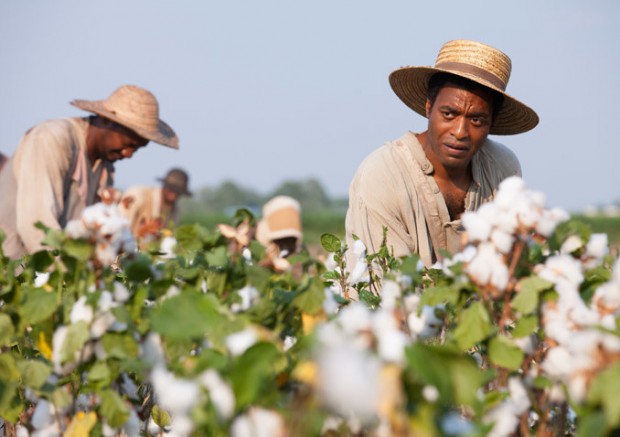
In 1841, Northup, a free man living as a violinist with his family in Saratoga, is conned, drugged and sold into slavery by traders posing as would-be employers. Northup (played with powerful subtlety by Chiwetel Ejiofor) is subsequently sold between several plantations throughout Louisiana over the dozen years of bondage that he ultimately endures, the bulk of which are spent under the iron fist of sadistic plantation owner Edwin Epps (Michael Fassbender). Newcomer Lupita Nyong’o provides an incredible debut turn as Patsy, the perpetually tormented slave who provides the most pronounced emotional sting of the piece. Over the film’s 134 minute runtime McQueen never overplays his hand, allowing the events to speak for themselves as his camera simply observes. Films dealing with American slavery can sometimes rely on swelling scores and lofty speeches to convey their message, but 12 Years A Slave paints pictures of suffering that force us to confront the realities of history without the filter of melodramatic Hollywood conventions*. In one long, stagnant shot towards the end of the film, Ejiofor articulates the full weight of Northup’s experience using only the look on his face and the trauma in his eyes.
This is an important film created by a skilled filmmaker who understands and respects his subjects enough to let them speak for themselves, and we hear them.
*The one exception in my opinion is the handling of Brad Pitt’s character, a Canadian carpenter introduced late in the film who ultimately plays a crucial role in Northup regaining his freedom. The dialogue between Pitt and Ejiofor is a bit too on-the-nose in articulating themes that any worthwhile person would already understand, especially when held up against the subtle tenor of the rest of the film. I’ve seen a number of other critics make this point, however some go too far with further assertions that the character itself is too convenient, or even a deus ex machina. Pitt’s character is based on a real person from Northup’s experience. The writing may be a little too convenient, yes, but the presence of the character and his effect on the story is simple fact.
6. Inside Llewyn Davis (Dirs. Ethan Coen/Joel Coen)
The Coen brothers’ latest effort swings wildly (but elegantly) between comedy and tragedy, leaving one feeling a bit disoriented; but Inside Llewyn Davis is strengthened by a soulful lead performance from Oscar Isaac and a traditional yet freshly interpreted soundtrack. As someone who played music at a moderate level for many years, it’s sometimes more difficult for me to take films about music/musicians seriously, but in this case the T. Bone Burnett-produced material is deployed in tasteful measure by the directors and skillfully realized by their actors.
Isaac plays Llewyn Davis, a fixture on the Greenwich Village folk scene of the early 60s. For those not familiar, this is the time and place that gave rise to folk icons like Bob Dylan, Arlo Guthrie and Joni Mitchell. Though Davis is indeed a fictional character, he is loosely based on the very real Dave Van Ronk. Having already gained some level of success as the film opens (though apparently not enough to spare him the dispiriting nightly routine of finding a friendly sofa to lay his head), Davis struggles to establish his solo act following the disintegration of his now defunct two-man-show. Isaac’s performance in the opening scene, and throughout the film, is wholly convincing (providing his own vocals and guitar playing) and sets the tone early on that the Coens are going to give these songs plenty of room to breath.
From there we follow Davis on a gloomy winter odyssey punctuated by top notch examples of that rhythmic Coenian comedy so many of us have come to love, but with an undercurrent of melancholy hovering below the surface that breaks through only just enough to suggest a much deeper sadness. There are passages dealing with suicide, abortion and addiction, and to create an atmosphere that allows those scenes to coexist within the same film that gives us the “Please Mr. Kennedy” sequence is truly a remarkable feat. At times the story feels overly tangential, all subplot, but the film’s episodic style coupled with a clever narrative structure that would feel gimmicky in lesser hands is fitting to the mindset of our titular troubadour. Inside Llewyn Davis is yet another exceptional entry to the Coen brothers’ sterling body of work and easily their most successful film since No Country for Old Men.
5. Her (Dir. Spike Jonze)
Spike Jonze has done it again…and for the first time. The talented director behind Being John Malkovich and Adaptation has also penned the original screenplay for his latest film, and while this is indeed a freshman writing effort from Jonze, he has crafted a funny and affecting story with the ease and instinct of a seasoned veteran. In short, the film examines the romantic relationship between a lonely, recently divorced writer (Joaquin Phoenix) and his new Siri-like operating system (evocatively voiced by Scarlett Johansson). The premise is ripe for farce, but Jonze and his collaborators treat the material with a straightforward earnestness that somehow demands to be taken seriously.
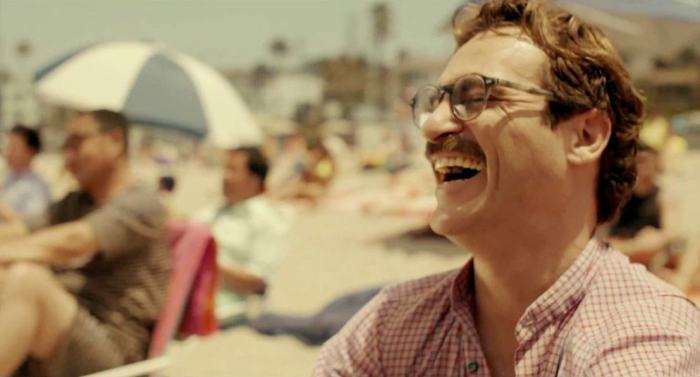
Her also happens to be perfectly cast. In contrast to his prior role in Paul Thomas Anderson’s The Master, Phoenix’s gentle performance as Theodore Twombly proves a depth of range that may be unparalleled in contemporary American acting (especially now following the tragic death of Phoenix’s friend and Master co-star Philip Seymour Hoffman). But perhaps the most vital aspect of Her is Johansson’s disembodied performance as OS Samantha. Interestingly enough, Jonze had completed principal photography on the film having cast (the talented) Samantha Morton as Phoenix’s love interest, but eventually felt that Morton’s performance was somehow not quite right. Jonze shows an enormous amount of confidence in the clarity of his vision, making the difficult decision to recast one of his leads after wrapping the initial shoot.
It’s rare when a film that could fairly be deemed science fiction packs such an emotional wallop, but Her succeeds in the end on the strength of its performances and the assuredness of its writing. An inspired score (from members of Arcade Fire) and idiosyncratic production design/costumes add their own flourishes to the proceedings, and the result is a thought provoking yet accessible film. For me it was the most anticipated of the year, and simply put, it met or exceeded my expectations in every way.
*Johansson also stars in the forthcoming Under the Skin, one of Moving Pictures’ most anticipated films of 2014.
4. The Act of Killing (Dir. Joshua Oppenheimer)
In a world…where the perpetrators of a mass genocide have become national heroes and pop culture icons, a man from foreign lands is enlisted to create a film celebrating their misdeeds by re-enacting them in gory and surreal detail. While this may sound closer to the setup of a dystopian science fiction movie, it is actually the subject of Joshua Oppenheimer’s latest documentary feature.
The world is modern day Indonesia; the genocide was the killing of over half a million alleged communist sympathizers and ethnic Chinese in the wake of a botched military coup in 1965; the perpetrators are Anwar Congo (the “star” of the film) and the enclave of former gangsters who personally assisted him in carrying out thousands of executions, many of which were performed quite simply with a small piece of wood, a post and a strand of metal wire. It is unknown to this writer how Mr. Oppenheimer gained access to these men, or for that matter gained their trust to the extent that he has. Their cavalier attitude must be owed to the fact that they’ve never been held accountable in any way for their transgressions. As one of the film’s subjects puts it, “‘war crimes’ are defined by the winners.”
The Act of Killing is not actually the film that Oppenheimer endeavored under the pretense of making, but rather a behind-the-scenes look at the grisly production that ends up functioning as a film-within-a-film. These scenes are supplemented by a series of interviews with Congo and his cronies, and as he recounts his killings in scene after scene in sickening detail, cracks in his veneer of rectitude begin to appear. During one passage late in the film taking place at a former execution site, Oppenheimer’s lens captures Congo literally choking on his own guilt as the cognitive dissonance that he employs so deftly up to that point begins to falter. While many other films have effectively examined themes of shame, regret and conscience, few have utilized the documentary format to explore these ideas with such a piercing gaze.
3. Frances Ha (Dir. Noah Baumbach)
Between the endearing neuroses of the titular character and the NYC setting rendered gorgeously in black and white, Frances Ha evokes early Woody Allen, but with a story that speaks to the distinctly modern challenges of many Generation Y-ers. The film chronicles several months in the life of Frances (played by co-screenwriter Greta Gerwig with the perfect balance of quirk and realism), a 27 year old aspiring dancer living in the Prospect Heights section of Brooklyn, as she bounces from living situation to living situation after her longtime roommate and best friend, Sophie, moves out to live with her boyfriend.
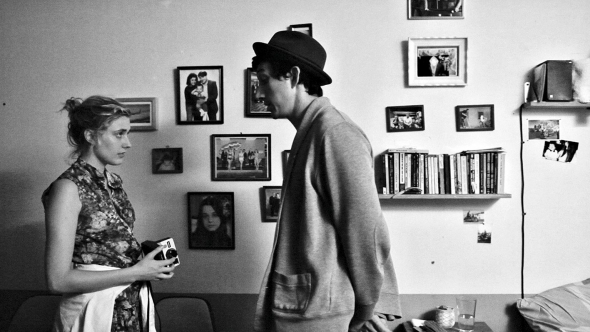
The opening scenes keenly establish the comfortable domesticity and deep friendship that the two young women have cultivated, as well as the inevitable friction familiar to anyone who has cohabitated with friends (“What about the time you made a cake?!”). After these brief glimpses of life as it has been, we spend the rest of the film following Frances as she crashes with new friends Benji and Lev (played by Girls’ Adam Driver, displaying his usual gift for wit and delivery), takes a trip back home to Sacramento for the holidays, attempts to create a surrogate best friend in a fellow dancer, flies to Paris on a whim for a short weekend getaway and accepts a temporary job at her alma mater as a summer RA. The film’s closing scenes provide a realistic blend of open-endedness and well earned closure. Perhaps it’s because I’m the same age as Frances and it was easy for me to draw parallels from my own life, but in the end it all rang truer than I’d anticipated.
In the wrong hands this material might come across as silly, or at least uninteresting, but Director Noah Baumbach (The Squid and the Whale, Greenberg) knows how to strike the proper balance of comedy and emotion to make us genuinely care about Frances. The problems dealt with in this film are distinctly upper-middle class problems, but they’re depicted with a truth and authenticity that keeps the audience from resenting the characters. Frances Ha is exceptional filmmaking across the board, and I must say, boasts one of the more clever and satisfying final shots that I’ve seen in quite some time.
2. Before Midnight (Dir. Richard Linklater)
I’m not quite sure how Richard Linklater’s Before trilogy evaded my attention for so long. Before Sunrise had skirted the periphery of my awareness since a few years after it came out, and I was working a high school job at Hollywood Video when Before Sunset hit the shelves. I never gave either much thought. Maybe it was the cover art, or simply my general assumptions about American “romance” films at the time, but for some reason I just expected not to like them. I could not have been more grossly mistaken. These films taken as a whole are a grand, ambitious and sublimely successful cinematic experiment, possibly the most comprehensive study of the life cycle of love ever committed to film. It is difficult to write a synopsis/critique of Before Midnight in a vacuum because the now three part story of Jesse and Celine necessarily acts as one unified piece (minor SPOILERS ahead).
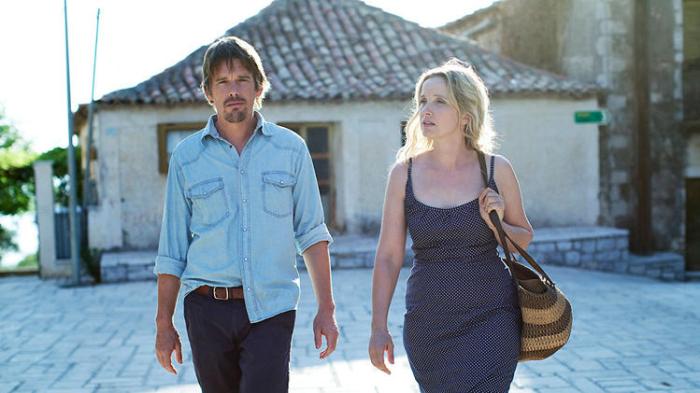
Taking place 9 years after the events of the second installment and 18 years after the first, both in real time and the chronology of the films, the latest entry takes on a markedly different tone than it’s predecessors. Now firmly planted in middle age with twin daughters and the myriad responsibilities that inevitably accompany that phase of life, Jesse (Ethan Hawke) and Celine (Julie Delpy) confront their long-festering feelings of resentment and doubt about the life they’ve built together and the choices they’ve made. All of this unfolds during the final day and night of an extended summer vacation to the Greek countryside, and the backdrop of idyllic vistas contrasts starkly with the couple’s often dire exchanges.
This is a film that oozes confidence in the understanding and voice of it’s characters, and rightly so. Take the feeling that one gets from, say, some of the longer stretches of dialogue in a Tarantino film, crank up the naturalism a few notches, excise the bursts of violence and you’re just about there. Watching people talk for almost two hours has rarely been this engaging. It is not just the premier caliber of the performances, directing and writing (Linklater co-wrote Midnight with leads Hawke and Delpy) that makes these films great, but also the structural choices. Each film takes place over no more than 12-15 hours (Before Sunset is pretty much presented in real time), never really looking away from what is happening in those moments, and Linklater’s useage of long, uninterrupted takes is a helpful formal technique in creating that sense of focus (one unbroken shot of a car ride conversation in Midnight pushes the 10 minute mark). That relentless continuity allows, and requires, the characters to fully express themselves, never letting them off the hook. There are no ellipses within these films, only between them, and those hyper focused snapshots taken of moments over such a long period of time in the lives of these characters is what makes the Before trilogy so effective. The writing nimbly folds exposition into organic conversation and trusts the audience to fill in any remaining gaps. Each piece lends greater perspective to the others, culminating in an exquisite expression of the true meaning of romance. This can be quite a sad film at times, but it ends on a note of hope that feels earned rather than inserted.
1. Blue is the Warmest Color (Dir. Abdellatif Kechiche)
Controversy has been swirling around Blue is the Warmest Color since it took the top prize at the Cannes Film Festival last May: accusations of mistreatment (and even exploitation) of the cast and crew, backlash from the source material’s author, and of course, the extremely long, extremely graphic sex scenes. Controversy can help a good film garner attention and build interest, potentially opening it up to a wider audience, but in the case of Blue it has become a distraction from the fact that this is one of the best coming-of-age stories in recent memory, if not ever.
The film’s main focus is the romantic relationship between a young French girl named Adele, and Emma, a hip art school student several years Adele’s senior; but I stress that this is a coming-of-age story because it is just as much about Adele’s life before and after the relationship as it is about the relationship itself. Indeed, much of why their connection carries so much weight is because we spend those small, quiet moments with Adele both before and after her time with Emma has run its course (in fact, the French title of the film is The Life of Adele – Chapters 1 & 2). That structural choice, coupled with a beautifully naturalistic and emotionally raw performance by Adele Exarchopoulos, makes Blue a deeply immersive experience. Lea Seydoux, as Emma, hits all the right notes as the mature, nurturing lover and the increasingly distant artist, and the entire supporting cast creates a lush tapestry of characters that deepens and enriches the world created by Kechiche. But one really cannot say enough about Exarchopoulos. A relative unknown prior to filming, she is utterly convincing at every moment, whether chatting at the school lunch table with friends, teaching a class full of second graders, making passionate love or eating a plate of spaghetti.
Blue is the Warmest Color is a film about a particular relationship, yes, but ultimately it is about how love shapes our lives, how it does not always conform to our plans and responsibilities, how we can learn from the pain we experience, and how some people will always matter to who we are. This story happens to be about two young French women, but these are themes that anyone who has lived can understand.
Honorable Mentions:
Captain Phillips (Dir. Paul Greengrass) – Remove the clumsy opening with the Captain and his wife on their way to the airport and this film might edge into the top 10. While including a scene like this is key to humanizing Phillips and establishing the stakes for the character, a more intimate, day-to-day type of conversation would have been exponentially more effective than shoehorning in the couple’s musings on the pitfalls of the modern day global economy. Aside from that minor misfire, the film works extremely well. Greengrass (United 93) is the perfect director for this material and Hanks gives his best performance in well over a decade; the final scene alone may be his crowning achievement.
American Hustle (Dir. David O. Russell) – Oddly enough, my appreciation of Russell’s films seems to have declined as his success (both critical and popular) has increased, but I was pleasantly surprised by American Hustle. Typically for this director, his latest outing excels mostly in terms of style and entertainment value, always straining a bit when attempting to hit more emotional notes, but it’s an expertly made film nonetheless. The A-list cast is clearly having a blast with the material, as cartoonish as some of the portrayals may be, but Jeremy Renner as the duped Camden Mayor Carmine Polito may be the only one to fully succeed in creating a genuine character.
The Wolf of Wall Street (Dir. Martin Scorsese) – As impressive and influential as Martin Scorsese’s career has been, his films just haven’t been quite the same since the turn of the millenium. That being said, Wolf is the best he’s made in quite some time (I’d say since Gangs of New York); more vivacious, more over-the-top (if a little too polished), and certainly quite relevant in the post-recession era. Leonardo DiCaprio gives a commanding and crazed performance that in a less stacked year could have easily won him that elusive Oscar. Jonah Hill (a now two-time Oscar nominee) also proves himself yet again as a skilled actor capable of transcending his Judd Apatow-affiliated comedic roots.
The Stories We Tell (Dir. Sarah Polley) – Having achieved ample success both in front of and behind the camera over the last 15 years or so, the Canadian actor/director Sarah Polley most recently tries her hand at the documentary format. The result is an enigmatic exploration of her own family’s history that reinforces Polley’s Renaissance Woman status. A series of interviews with her charming father Michael and many siblings work on dual levels as an engrossing genealogical puzzle and a telling study of the nature of memory itself.

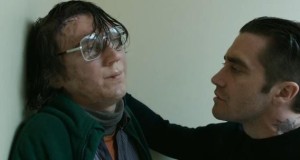
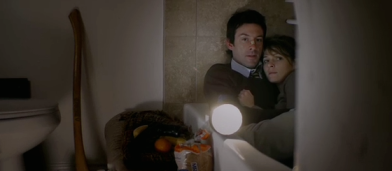
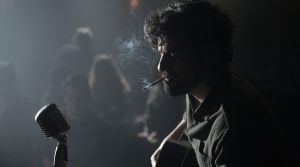
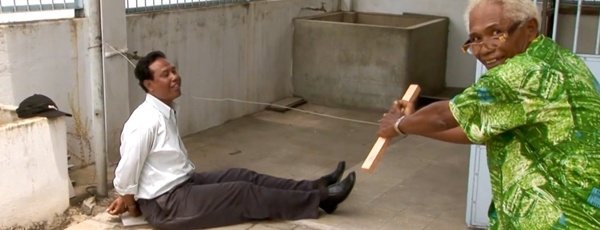
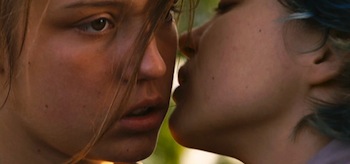
Reblogged this on you misheard me..
Awesome work, I’ll be back !
Fantastic! I’m happy to be made aware of some movies I didn’t catch, which now I have to see. And these pieces not only teach me a lot about film structure and fine distinctions, but whoah: you’re a damn good prose stylist!
Pingback: Boyhood | Moving Pictures